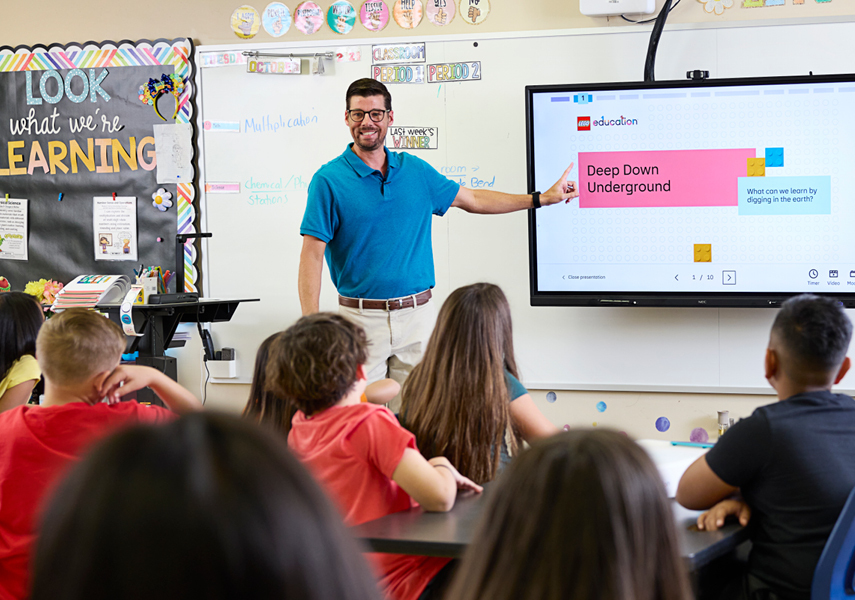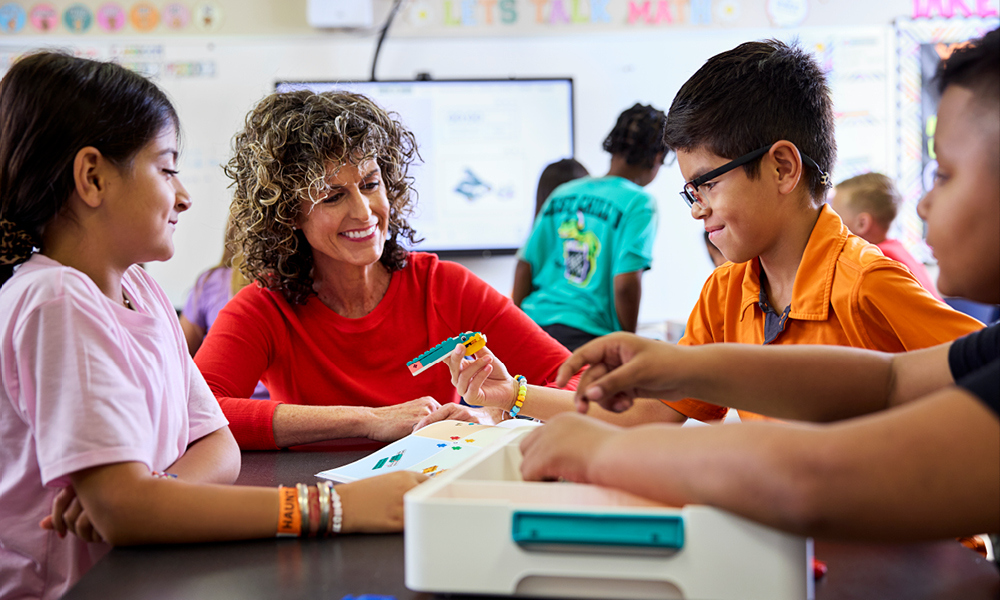Education has the potential to foster curiosity and empower future scientists through engaging hands-on learning, proven to positively impact students and teachers. In this Q&A, Bo Stjerne Thomsen, Head of Education Impact at LEGO Education explores the vision, development, and potential of LEGO® Education Science. He shares the guiding principles behind the solution, the specific skills it aims to develop, and the support provided to educators for seamless classroom integration.
To begin, could you briefly introduce LEGO Education and talk a bit about its history, research partners, and the evidence behind the development process?
LEGO Education is a dedicated part of the LEGO Group, inspiring and developing children and students through hands-on playful experiences. What might be less known is that LEGO Education has been directly influencing children's learning through hands-on materials for 45 years now. Our core belief is in the power of joyful learning to keep students engaged and equip them with the skills needed to navigate their future and pursue exciting careers. We collaborate closely with educators and innovators to develop hands-on materials combined with engaging activities and lessons that align with market needs and educational standards. Our unique aim is to transform learning so that every student can succeed.
LEGO Education has always been rooted in a research-based approach to learning, inspired by the principles of constructionism — the idea that children learn best when they can physically explore and express ideas using hands-on, meaningful materials. We’ve worked closely with leading academic institutions around the world and regularly engage with research partners through co-creation workshops, classroom testing, and ongoing feedback loops to better understand and enhance the impact of our tools on students and educators globally.

Could you describe the core vision behind the development of this new project and how it addresses the evolving needs of science education?
Our core vision remains centred on providing students and educators with engaging and joyful learning experiences. This goes beyond simply understanding science topics; it's about fostering creativity, critical thinking, and collaboration throughout the learning process. Our research highlighted a significant challenge: many students don't feel that science is ‘for them’, despite its fundamental importance. This is concerning because science, by its very nature, lends itself to hands-on exploration and fuels natural curiosity. Young children are inherently curious, testing and experimenting with the world around them, but this excitement often diminishes over time. We see a critical need to reignite that active engagement in science.
Furthermore, we recognise the global shift in educational policy towards emphasising not only scientific knowledge, but also crucial skills like creativity and critical thinking. Educators themselves acknowledge science as a natural gateway for developing these broader skills. Therefore, our vision for LEGO Education Science is to create a powerful synergy: deeply engaging students in a vital subject like science, fostering essential 21st-century skills, and leveraging the inherent benefits of hands-on learning. This combination is at the heart of our approach.
What specific scientific concepts and skills are these new solutions designed to cultivate in students, and how do they align with current educational standards?
Our primary focus is to address educational standards effectively. We've designed our newest product with 120 lessons covering life science, physical science, earth science, and engineering. Whether it's exploring genetics in life science, investigating environmental science principles, or conducting physical experiments, we start with the standards, learning objectives, and desired outcomes. We then design engaging classroom activities where children collaborate and generate multiple ideas to practice these outcomes.
We understand that educational standards vary across countries. We have local subject matter experts and reseller partners who possess a deep understanding of the current state of science education and its future direction. This allows us to map our solutions onto local standards and support curriculum implementation effectively. Our approach is to design for the standards in a way that is inherently engaging and nurtures students' curiosity.
Uniquely, our methodology involves a guided inquiry-based approach using hands-on materials. Teachers introduce a topic through an open-ended and relevant question to spark student interest. Then, children collaborate in groups to explore concepts – for example, in physical science, they might build models to understand material properties like strength and weakness, or in life science, they explore examples of how plants grow and evolve. Following this, they conduct their own experiments, often developing novel ideas for how to test their understanding, and finally presenting their suggestions for alignment to lesson objective. This open-ended approach has proven highly impactful in boosting engagement, knowledge acquisition, and skill development.

What kind of professional development and support resources are provided to educators to ensure they can effectively implement these science solutions in their classrooms?
This is a critical question, as our research indicates that a significant majority of educators (73%) don't feel fully equipped to teach science, and half of administrators are unsure if their current resources are being used effectively. To address this, we've focused on 2 key areas. Firstly, we've designed the materials to have a very low entry barrier for teachers on materials and facilitating creativity and collaboration. With each set of hands-on materials, educators receive an online classroom presentation. This presentation includes engaging slides that directly address students, guiding them through the topic, supporting collaboration, and facilitating reflection and evaluation at the end of the lesson. Essentially, teachers receive ready-to-use classroom materials straight out of the box.
Secondly, we offer professional development opportunities tailored to different markets. In the US, we provide our own professional development focused on facilitating classroom interactions and collaboration. While teachers possess content knowledge, our focus is on equipping them with the right tools to get started easily and effectively guide student interactions. These are often hands-on sessions. In international markets, we work through our local resellers – partners who deeply understand the local context and teachers' educational backgrounds. We certify teacher trainers from these local partners who then deliver professional development based on specific regional needs.
Our goal is to build confidence for all educators on how to effectively teach science using hands-on materials, with additional support provided based on the market. We also ensure local relevance through the way we adapt our materials for different regions.
Can you share any early feedback or success stories from educators and students who have already used these new LEGO Education Science solutions?
LEGO Education Science started shipping in August 2025, and has been implemented in classrooms since then. Over 3,000 students in over 100 classrooms tested the solution during development, making it the most well-researched and tested learning solution in the history of LEGO Education.
I vividly recall an interview with a group of children after a testing session. When asked what was special about this type of science education compared to their usual lessons, one girl thoughtfully replied that it was the first time she felt truly invited to participate in science. Our approach ensures that every child has the opportunity to learn with materials, try out activities, and contribute their ideas. This contrasts with classrooms where some students might dominate experiments while others merely observe or follow along. The feeling of being invited to participate was a powerful indicator for me that we have something special with LEGO Education Science.

